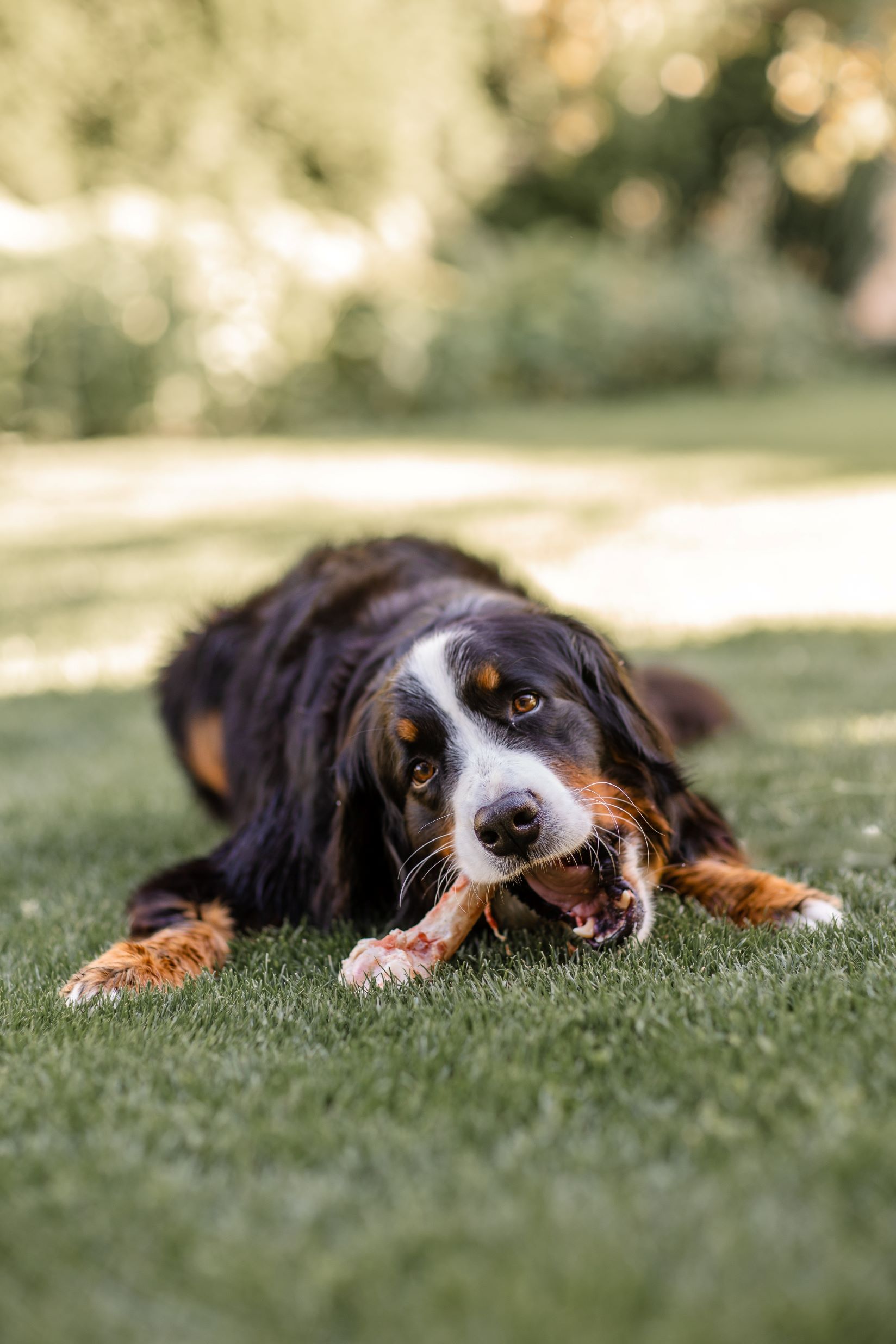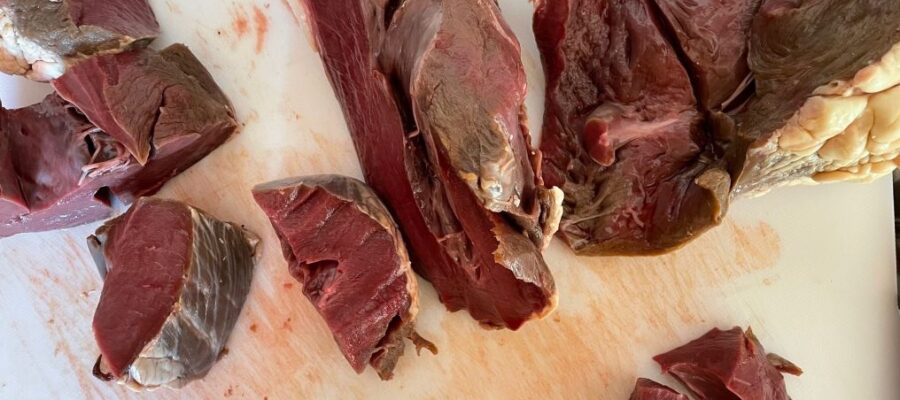
Wellness Wednesday: Unraveling the Canine Conundrum – Are Marrow Bones Good for Dogs?
Updated: June 2024
The sight of a dog blissfully gnawing on a marrow bone is a classic image of canine contentment. But as with many treats, it’s essential to separate the joy from potential risks. In this guide, we’ll delve into the nutritional aspects, safety considerations, responsible practices, and the sheer pleasure marrow bones offer our furry companions.
The Primal Urge: Why Dogs Love to Chew
Chewing is an ancestral behavior rooted in a dog’s wild instincts. In the past, canines used their teeth for everything from hunting and tearing prey to cleaning themselves. Domesticated dogs, while far removed from their wild counterparts, still possess these instincts. Chewing provides them with a sense of satisfaction and fulfillment.
Mental and Physical Perks of Chewing
- Mental Stimulation: Chewing engages a dog’s brain, providing a focused activity that helps alleviate boredom and anxiety. It’s a fantastic way to prevent destructive behaviors that can arise from pent-up energy.
- Dental Hygiene: Gnawing on a hard object like a marrow bone acts as a natural toothbrush, helping scrape away plaque and tartar. This can lead to healthier teeth and gums, reducing the risk of dental diseases.
- Stress Relief: For some dogs, the repetitive motion and focus required for chewing can be incredibly calming and soothing. It can help alleviate anxiety and provide an outlet for excess energy.
- Jaw Strength: Chewing exercises the muscles in your dog’s jaw, contributing to their overall oral health and strength.
The Nutritional Value of Marrow Bones
- A Mineral Powerhouse: Marrow is a significant source of calcium and phosphorus – building blocks for strong bones and healthy teeth. It also delivers iron, zinc, essential fatty acids, and other vitamins that support overall health.
- The Fat Factor: While bone marrow is undeniably rich and flavorful, it’s a concentrated source of fat. This offers an energy boost for active dogs, but also emphasizes the importance of moderation to maintain a balanced diet.
- Not a Complete Meal: Think of marrow bones as a delicious supplement, never a replacement for your dog’s regular, nutritionally balanced food. Keep an eye out for signs that your dog needs a meal supplement.
Safety First: Choosing and Supervising
- Raw is Best: Never offer dogs cooked marrow bones. They become brittle, increasing the risk of splintering, and potentially causing choking hazards or internal injuries. Always source raw marrow bones from trusted suppliers.
- Size Matters: Pick the right size marrow bone for your dog. Overly large bones can be frustrating, while too-small bones pose a choking risk.
- Supervision is Key: Never leave your dog unsupervised with a bone. If it gets small enough to swallow whole, becomes damaged, or your dog loses interest, remove it safely.
- Freezing for Safety & Fun: Frozen marrow bones are harder (less likely to splinter), last longer, and offer a soothing treat for teething puppies or hot days.
Bone Varieties for Every Dog
- Knuckle Bones: Hardy and long-lasting, great for power chewers. The cartilage offers extra joint-health support.
- Long Bones: Ideal for large breeds with strong jaws. Ask your butcher to cut them to an appropriate length for your dog’s size.
- Split Bones: Offer easy access to the delicious marrow, especially good for beginners or less aggressive chewers.
- Small Marrow Bones: Tailored for smaller breeds, ensuring a safe chewing experience.
- Alternatives: For puppies, senior dogs, or those with dental issues, consider softer “marrow chew toys” filled with safe, spreadable fillings.
Moderation is Key
While marrow bones offer numerous benefits, it’s important to exercise caution and moderation:
- High-Fat Treat: Marrow is high in fat, so too much can lead to upset stomachs, weight gain, or even pancreatitis in some dogs.
- Supervise Chewing: Always supervise your dog when they’re enjoying a marrow bone. Avoid cooked bones, which can splinter and cause serious injuries.
- Size Matters: Choose a bone size that’s appropriate for your dog. It should be large enough to prevent them from swallowing it whole.
Introducing Marrow Bones To Your Dog
- Start Slowly: Begin with short chewing sessions (10-15 minutes) and gradually increase the time as your dog gets used to it.
- Monitor Reactions: Watch for any signs of digestive upset or allergies. If your dog experiences any issues, discontinue the marrow bone and consult your veterinarian.
- Choose Raw Bones: Always opt for raw marrow bones, as cooked bones are more likely to splinter and cause harm.
FAQ About Marrow Bones for Dogs
-
Are marrow bones safe for puppies? It’s generally best to wait until puppies are at least six months old before introducing marrow bones. Their teeth are still developing, and they may be more prone to chewing aggressively.
-
What if my dog breaks off a piece of bone? If a small piece breaks off, it’s usually not a concern. However, if it’s a large piece or your dog seems to be having trouble swallowing, contact your veterinarian immediately.
-
Can I give my dog a marrow bone every day? Due to the high fat content, marrow bones are best given as an occasional treat, not a daily staple. Your veterinarian can help you determine the appropriate frequency based on your dog’s individual needs and dietary restrictions.
The Bottom Line: Marrow bones offer a natural and enjoyable way for dogs to indulge their chewing instincts while reaping the benefits of mental stimulation, dental hygiene, and nutritional value. By choosing the right bone and supervising your dog’s chewing sessions, you can ensure a safe and enriching experience for your furry friend.






